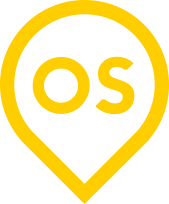What Mark Twain can teach us about connected experiences
There is some debate as to the source of the following quote. For the sake of this discussion, let’s give Mark Twain the props.
“It ain’t what you don’t know that gets you into trouble. It’s what you know for sure that just ain’t so.” Mark Twain
Let’s think about this quote for a minute. In this ever-connected world, we are grabbing data, consuming AI, and making countless decisions and assumptions based on the dashboards we review. In many respects, that’s great. Knowledge is power.
But knowledge is also elusive, variable, and can only be powerful if harnessed well. It’s tempting to draw conclusions quickly.
As soon as someone decides what they ‘know for sure,’ then investigating stops, curiosity halts. The learning process slows. Often, people resist creativity, innovation, and engagement because of what they feel they know.
There are challenges with this sentiment with respect to how you evaluate and deploy technology to customers, suppliers, and even internal team members. Let’s look at three of these challenges.
1) The world of IoT is complicated and ever-changing
This may be an overstatement of the obvious. The technology world is changing so swiftly that it is difficult to budget, anticipate, adjust, and stay ahead of the competition.
As a result, in every area of this complex landscape, you are making assumptions about what is a certainty. You are betting on cloud platforms, design sensibilities, user experience design, and competitive positions. You are choosing sensors, communication gateways, data solutions, and native app development integrations. As you navigate these many choices, allow Mark’s wisdom to shine.
What are you assuming that you know for sure? What other options or information sources are in play? Be open to possibilities, options, and outside perspectives. Resist the temptation to close off your options in order to optimize speed or financial considerations.
2) Your audiences change every year
Consider the technology your audiences prefer. Consider the changes you’ve seen in how they make decisions, where they turn to for information, and how you earn their trust. Keep in mind that the pace of change has accelerated in the past months.
Then, let’s assume that 5% of your audience transitions each year. This could be a result of many factors in changing markets. That means you are dealing with small, yet powerful shifts in who is looking at your products and services and how they buy.
The more assumptions you make about what your customers look like, need, feel, and respect, the more you might miss valuable insights into how you can make them an advocate of your company. Since it is a moving target, you are better off staying agile with respect to what you know for sure.
3) Customer norms shift
We find ourselves in the midst of a shift in norms that will have far-reaching implications. What was viewed as normal for gathering, communicating, and connecting two years ago is off the table right now.
Plus, what is around the corner is anyone’s guess.
The world will get past 2020 and we will gather again. However, what is perceived as acceptable and valuable may be forever changed. As the world settles, it won’t look exactly as it did two years ago. Each culture will find a new set point, new habits will emerge and new preferences will begin to dominate.
Whatever, the case, be on the watch for new points of view and insights. The businesses that respond to and respect these changes will capture the most market share and mindshare in the coming years.
Connected experiences will continue to increase and expand. What customers perceive as valuable will adjust as well. And, the world we live in will look different than it did just a few short years ago.
The power to change rests in how you look at information and turn that into knowledge. As fluid as it might be, knowledge is powerful.
The prolific, comical writer, Mark Twain, gave us so many wonderful quotes and quips. But the most important is the reminder to be open to new concepts and resist the temptation to lock in what we know at the expense of endless possibility.

